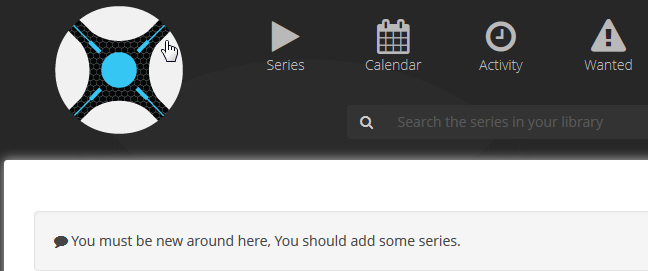

The Upcoming Media Card can be customised using the variables given on the GitHub page. As with the previous integration, you will have to enter your API key, your host, and your port: sensor: Once installed you will have to add the custom integration with a few lines of YAML.
INSTALL SONARR INSTALL
For this to work you will have to install two components from HACS: Install Jackett on Debian Linux for Custom Torrent providers in Sonarr and CouchPotato lets you easily add more torrent trackers using the Torznab API. Thanks to a custom integration and a custom Lovelace UI card you can display upcoming episodes in your frontend. But don’t worry, there is more! Display upcoming episodes in Home Assistant Because let’s be honest for a moment, none of the sensors is really all too useful. Is that all?Īt this point, you might be wondering if what I’ve just listed is everything you can do with the Sonarr.
INSTALL SONARR UPGRADE
It can also be configured to automatically upgrade the quality of files already downloaded when a better quality format becomes available. It can monitor multiple RSS feeds for new episodes of your favorite shows and will grab, sort and rename them.

This sensor monitors how many episodes are listed as wanted and will list those shows as attributes. Sonarr is a PVR for Usenet and BitTorrent users. Tells you how many episodes are listed as upcoming and lists those episodes as attributes. This one could be useful if you like adding nice graphs to your Lovelace UI. This sensor monitors how many shows you have added to Sonarr in total and will list each show as an attribute. Installation¶ Setup ¶ Addons¶ 4K Logo ¶ Sonarr Darker ¶ Screenshots¶ Aquamarine Theme. Unix experts will see that this is very hacky and insecure, especially as everything is running as root and listening on all IPs by default, so it’s a really good idea to put this inside a jail.Advertisement Sonarr Shows (sensor.sonarr_shows) Lastly we need to get Sonarr launching at boot, so we make a small script in rc.d which gets run at boot. Grab the files and extract, simple enough. Then we install mono, mediainfo, sqlite3 and all their required dependencies, including perl. By moving the configuration file, it will heal itself and just work™, although this should not be necessary on newer versions of FreeBSD. FreeNAS 9.2 may have an older version of pkg installed. If you are wondering what is going on in the commands, here’s a brief rundown. You can execute run_drone, reboot the system or restart the jail if installed into one.


I am trying to install Sonarr (formerly known as NZBDrone) on a fresh install of CentOS 8. usr/local/bin/mono /root/NzbDrone/NzbDrone.exe -nobrowser & Sonarr (Nzbdrone) on CentOS 8 - mediainfo. Copy and the paste the following line into the editor: mv /usr/local/etc/pkg.conf /usr/local/etc/Īt this point you have a text editor open. If you want to do this safely, install and run it inside a FreeBSD jail. This guide was tested under FreeBSD 10.1-RELEASE. If you aren’t familiar with Unix or Linux, this guide should hopefully be enough to get you up and running. Installing Sonarr on FreeBSD isn’t hard, but does require several commands.
INSTALL SONARR HOW TO
This short tutorial will show you how to get Sonarr set up on FreeBSD.


 0 kommentar(er)
0 kommentar(er)
